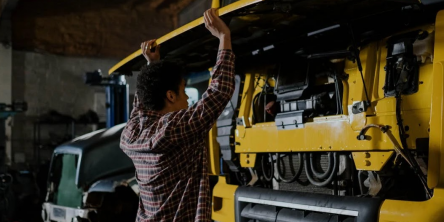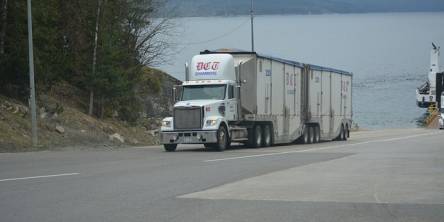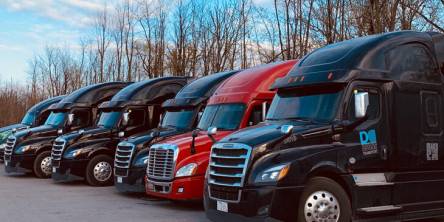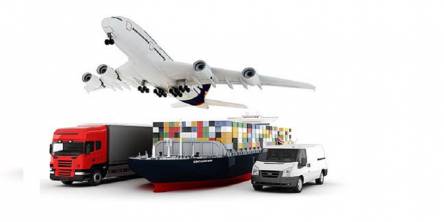Best Practices for Fleet Safety: Reducing Accidents and Ensuring Compliance

Ensuring the safety of your fleet is not only about protecting your drivers and vehicles but also about maintaining compliance with regulations and reducing overall operational costs.
With the right strategies in place, you can significantly minimize accidents and enhance safety across your fleet.
Developing a Comprehensive Fleet Safety Policy
Creating a clear and detailed fleet safety policy is the foundation of a successful safety program. This policy should outline specific safety guidelines and protocols that every driver must follow.
Regular updates and reviews of this policy ensure that it remains relevant and effective. It’s also crucial to stay informed about local and national regulations to ensure full compliance.
Driver Training and Education
Your drivers are the heart of your fleet operations, and investing in their training is essential. Ongoing training programs that emphasize defensive driving techniques can significantly reduce the risk of accidents.
These programs should also address common issues like driver fatigue and distraction, which are major contributors to road accidents.
By educating your drivers on the importance of staying alert and focused, you can foster a culture of safety within your fleet.
Vehicle Maintenance and Inspection
Regular vehicle maintenance and inspections are critical to preventing accidents. Establish a maintenance schedule that includes routine checks and servicing of all fleet vehicles.
Pre-trip and post-trip inspections should be mandatory to identify and address any potential issues before they escalate.
Utilizing fleet management software can streamline these processes, ensuring that maintenance is conducted on time and any problems are promptly resolved.
Implementing Safety Technology
Leveraging technology is a powerful way to enhance fleet safety especially for a fleet of trucks. Telematics and GPS tracking systems for trucks provide real-time data on vehicle locations, speeds, and driver behavior.
This information can be used to monitor compliance with safety policies and identify areas for improvement. Installing dash cams and real-time monitoring systems allows you to review incidents and provide feedback to drivers.
Collision avoidance systems can also play a crucial role in preventing accidents by alerting drivers to potential hazards.
Monitoring and Evaluating Performance
Tracking safety metrics is essential for measuring the effectiveness of your safety program. Regular audits and assessments help identify trends and areas where improvements are needed.
Implementing a reward system for safe driving practices can motivate drivers to adhere to safety protocols.
Ensuring Regulatory Compliance
Understanding and complying with relevant regulations is a key aspect of fleet safety. Maintain thorough documentation and records of all safety-related activities, including driver training, vehicle maintenance, and incident reports.
This not only helps in demonstrating compliance but also aids in identifying patterns that could indicate underlying issues. When violations occur, address them promptly and take corrective actions to prevent recurrence.
Incorporating these best practices into your fleet operations can lead to a significant reduction in accidents and ensure compliance with regulations.
Prioritizing driver training, regular maintenance, safety technology, and performance monitoring, can create a safer environment for your drivers and a more efficient operation overall.
Keeping your fleet safe is an ongoing commitment, but with the right approach, it is achievable and highly beneficial.
Frequently asked questions
What is the importance of a comprehensive fleet safety policy?
A comprehensive fleet safety policy is essential because it provides clear guidelines and protocols for drivers to follow, ensuring consistency and compliance with safety standards. It serves as the foundation of a successful safety program, helping to minimize accidents and enhance overall fleet safety.
How often should the fleet safety policy be updated?
The fleet safety policy should be reviewed and updated regularly, at least annually, or whenever there are changes in regulations or operational practices. This ensures that the policy remains relevant and effective in promoting safety and compliance.
What are the key components of driver training programs?
Effective driver training programs should include defensive driving techniques, education on common issues like driver fatigue and distraction, and the importance of staying alert and focused. Ongoing training helps reinforce these principles and fosters a culture of safety within the fleet.
How frequently should vehicle maintenance and inspections be conducted?
Vehicle maintenance and inspections should be conducted regularly according to a predefined schedule. Routine checks and servicing should be performed to ensure vehicles are in good condition. Pre-trip and post-trip inspections should also be mandatory to catch potential issues early.
What types of safety technology can enhance fleet safety?
Safety technologies such as telematics, GPS tracking, dash cams, real-time monitoring systems, and collision avoidance systems can significantly enhance fleet safety. These tools provide valuable data on vehicle locations, speeds, driver behavior, and potential hazards, allowing for better monitoring and feedback.
How can fleet managers track and evaluate safety performance?
Fleet managers can track and evaluate safety performance by monitoring safety metrics, conducting regular audits and assessments, and identifying trends and areas for improvement. Implementing a reward system for safe driving practices can also motivate drivers to adhere to safety protocols.
What steps are necessary to ensure regulatory compliance?
To ensure regulatory compliance, maintain thorough documentation and records of all safety-related activities, including driver training, vehicle maintenance, and incident reports. Regularly review and update policies and practices to align with current regulations. Address violations promptly and take corrective actions to prevent recurrence.
How can fleet safety practices reduce operational costs?
By minimizing accidents and ensuring compliance with regulations, fleet safety practices can reduce repair and insurance costs, improve vehicle longevity, and enhance overall operational efficiency. Investing in safety technology and training also helps prevent costly incidents and downtime.
What role does driver education play in fleet safety?
Driver education is crucial as it equips drivers with the knowledge and skills needed to operate vehicles safely. Ongoing education on defensive driving, fatigue management, and the importance of alertness helps reduce accident risks and promotes a safety-first mindset within the fleet.
Why is continuous improvement important in fleet safety?
Continuous improvement is important because it ensures that safety practices evolve with new technologies, regulations, and operational challenges. Regular evaluations and updates help maintain high safety standards and address any emerging risks, leading to a safer and more efficient fleet operation.
Similar Articles
A trucking lawyer, usually referred to as a commercial trucking attorney, practices transportation law. They offer legal services to commercial enterprises such as contractors, trucking companies, and logistics providers.
Being a Heavy Goods Vehicle (HGV) driver can be both lucrative and hard. While spacious highways create a sense of independence, spending lengthy hours on the road can lead to feelings of loneliness. Loneliness among HGV drivers is a common problem that affects their mental health and, as a result, their job happiness.
Pickup trucks are heavy-duty trucks that contain a cabin for passengers and also a bed at the back which is used for hauling the goods and also for towing. These pickup trucks are important for commercial and also for industrial uses.
Whenever a client has to move a heavy-weight from one location to another, it is not an easy job for anyone to carry out with safety and protection. It takes a professional company and highly skilled drivers with the right type of truck, to make sure the freight reaches its destination safely.
It might seem to be a simple task to hire a towing company to help you get out of trouble when you are stuck on the road. This might not be as simple a decision as you think. This article will tell you about some common mistakes that most people make while they are hiring a well-reputed towing company to rescue them and take them out of trouble
2019 is in full-swing and truck lovers have reason to rejoice with some of the 2019 offerings. Driving a truck serves many purposes. Drivers around the country prefer various specifications and capabilities.
An international freight forwarder company dispatches the goods from one part of the world to another part of the world. Freight services are also known to assist other tasks such as goods export to many other different nations across the globe. It is simply not possible to survive without these companies.
The heavy tow trucks offer a turbo-diesel engine as well as dual rear wheels. These features give the truck ample space and power needed for transporting large boats, campers, and other heavy-duty equipment.
Everyone knows how exciting camping in a truck can be. Nothing can be better than enjoying the nature by yourself. Having your own spacious ride further supplements the experience. Sleeping in your own truck while enjoying the fresh air is an amazing thing to do if traveling is in your blood.









